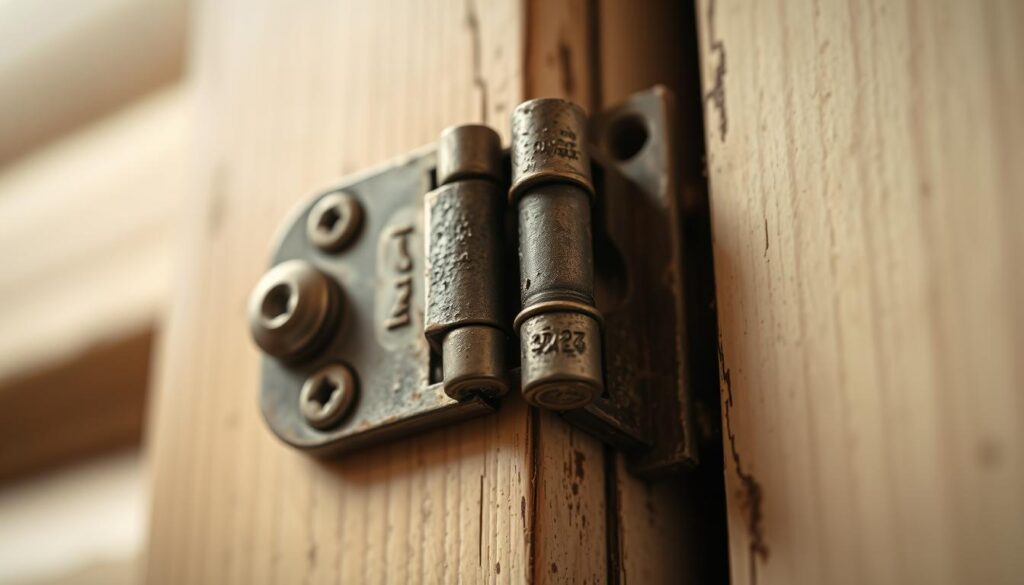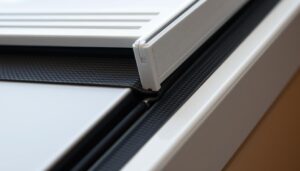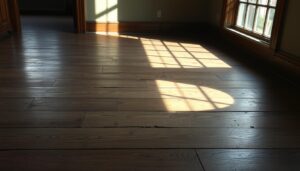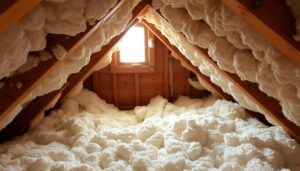A squeaky door hinge can be more than just a minor irritation; it’s a sound that can grate on your nerves every time someone enters or leaves a room in your home.
Fortunately, silencing that annoying creak doesn’t require professional help. In fact, with just a few simple steps, you can fix the problem for good. Understanding why your door squeaks in the first place is key to preventing the issue from recurring.
By the end of this article, you’ll know how to transform your squeaky doors into silently operating fixtures, enhancing the comfort of your house.
Key Takeaways
- Identify the causes of squeaky door hinges
- Learn simple steps to fix squeaky door hinges
- Discover effective lubricants for long-term results
- Understand how to prevent the problem from recurring
- Transform squeaky doors into silently operating fixtures
Why Do Doors Squeak? Understanding the Annoying Noise
A squeaky door hinge can be more than just a minor annoyance; it’s often a sign of wear and tear. Understanding the reasons behind this irritating sound is crucial to fixing the problem.
Common Causes of Squeaky Door Hinges
Squeaky door hinges are typically caused by a lack of lubrication, allowing metal parts to rub against each other. Other factors include dirt and grime accumulation, rust, and misalignment of the door or hinges.
- Dirt and grime can cause the hinge pins to stick, leading to squeaks.
- Rust on the hinges can also contribute to the annoying noise.
- Misaligned doors can put extra stress on the hinges, causing them to squeak.
How Friction Creates That Irritating Sound
The science behind the squeak involves friction between moving parts. When metal surfaces with high friction coefficients slide against each other, they create vibrations that travel through the hinge and door, amplifying the sound.
| Cause | Effect |
|---|---|
| Friction between metal parts | Squeaking noise |
| Dirt and grime accumulation | Increased friction, leading to squeaks |
| Rust on hinges | Additional friction and noise |
By understanding the causes of squeaky door hinges, you can take the first step towards fixing the issue. Whether it’s lubricating the hinges or addressing the underlying causes, you can enjoy a squeak-free home.
What You’ll Need: Tools and Materials
The key to fixing a squeaky door hinge lies in having the right tools and materials at your disposal. To effectively silence that annoying squeak, you’ll need to prepare a few basic supplies and choose the right lubricant for the job.
Basic Cleaning Supplies
Before applying any lubricant, you’ll need to clean the door hinges. Basic cleaning supplies include a cloth or brush to remove dust and grime, and possibly a screwdriver to remove the hinge pins.
Lubrication Options
When it comes to lubricating door hinges, you have several options. Some of the most effective lubricants include:
- Silicone spray: widely considered the best lubricant for door hinges due to its long-lasting results and lack of attraction to dust or dirt.
- Household oils like olive oil, which can serve as temporary lubricants in a pinch.
- Petroleum jelly (Vaseline): offers excellent lubrication properties and stays in place well, though it can be messy to apply.
- Lithium grease: provides heavy-duty lubrication, ideal for frequently used doors.
- Specialized hinge lubricants available at hardware stores, formulated for metal-on-metal friction and often including rust inhibitors.
Step 1: Prepare and Clean the Door Hinges
To effectively quiet a squeaky door, start by giving the hinges a good clean. This initial step is crucial for ensuring that your lubrication efforts are effective and long-lasting.
Removing Dust and Grime
Dust and grime accumulation on door hinges is a common cause of squeaks. You should start by wiping down the hinges with a damp cloth to remove any surface dirt. For more thorough cleaning, use a small brush to sweep away debris from the hinge pin and surrounding areas.
Dealing with Rust and Old Paint
Rust on door hinges not only contributes to squeaking but can eventually cause structural damage if left untreated. For light surface rust, use fine steel wool or a metal brush to gently scrub affected areas until the clean metal is visible. More severe rust may require a specialized rust remover solution. Apply the solution according to the product instructions and allow adequate time for it to work before wiping clean.
Old paint that has seeped into the hinge mechanism can be particularly troublesome as it creates uneven surfaces that increase friction. Carefully scrape away paint from moving parts using a small flathead screwdriver or utility knife, taking care not to damage the metal underneath.
| Issue | Solution |
|---|---|
| Dust and Grime | Wipe with a damp cloth and brush away debris |
| Light Surface Rust | Use fine steel wool or a metal brush |
| Severe Rust | Apply a specialized rust remover solution |
| Old Paint | Scrape away with a small flathead screwdriver or utility knife |
This cleaning job may seem tedious, but it’s essential for restoring smooth operation and ensuring your lubrication efforts will be effective and long-lasting. By thoroughly cleaning your door hinges, you’re setting the stage for a successful squeak-elimination process.
Step 2: Apply the Right Lubricant to Fix a Squeaky Door Hinge
After cleaning, the next crucial step is to lubricate your door hinges effectively. The right lubricant can make all the difference in eliminating that annoying squeak and ensuring your door operates smoothly.
Household Lubricants You Already Have
You might be surprised to find that you already have several lubricant options in your home. These can be particularly handy for a quick fix or when you’re waiting to get a more specialized product.
Olive Oil and Cooking Sprays
Olive oil is a readily available lubricant that can be used on squeaky door hinges. Simply apply a small amount to the hinge pins. Cooking sprays can also be effective, as they often contain lubricating properties.
Petroleum Jelly (Vaseline)
Petroleum jelly, commonly known as Vaseline, is another household item that can be used to lubricate door hinges. It not only reduces friction but also helps protect the metal from rust.
Bar Soap and Other Surprising Options
Believe it or not, bar soap can be used to lubricate squeaky hinges. Rub the soap onto the hinge pins, and you’ll notice a reduction in the squeaking noise. Other surprising options include lip balm and certain types of wax.
Specialized Lubricants for Longer-Lasting Results
While household items can provide a temporary solution, specialized lubricants are designed to offer longer-lasting results. These products are typically more effective at reducing friction and protecting against wear and tear.
Silicone Spray: The Top Choice
Silicone spray is often considered the top choice for lubricating door hinges. It provides a durable barrier against friction and is resistant to dust and dirt, making it an excellent long-term solution. As Tom Silva, a renowned carpenter, once said,
“Silicone spray is one of the best lubricants you can use on door hinges; it’s long-lasting and doesn’t attract dirt.”

WD-40 is a popular product that is often used to silence squeaky door hinges. However, it’s primarily designed as a water displacer and cleaner rather than a long-term lubricant. While it can provide temporary relief, it tends to evaporate quickly and attract dust, potentially creating new friction issues. For a more permanent fix, consider using a dedicated lubricant like silicone spray.
Step 3: Work the Lubricant and Test the Door
After applying the lubricant, you need to test the door to ensure the hinge is properly lubricated. This step is crucial in confirming that the squeak is eliminated and the door operates smoothly.
Opening and Closing Technique
To effectively work the lubricant into the hinge, open and close the door several times. This action helps distribute the lubricant evenly across the hinge pin and barrel. As you do this, you may notice the squeak diminishing or disappearing altogether.
When to Reapply Lubricant
Even the best lubricants will eventually wear out or dissipate over time, requiring reapplication to maintain squeak-free operation. The frequency of reapplication depends on the type of lubricant used and environmental factors. For instance, household lubricants like cooking oils may need refreshing every 2-3 months, while specialized products can last 6-12 months or longer.
| Lubricant Type | Reapplication Frequency |
|---|---|
| Household Lubricants (e.g., cooking oils) | Every 2-3 months |
| Specialized Lubricants | Every 6-12 months or longer |
It’s also important to consider environmental factors such as humidity and temperature fluctuations, which can affect how quickly the lubricant breaks down. Doors in bathrooms or exterior locations may require more frequent attention. Establishing a regular maintenance schedule for high-traffic doors can prevent squeaks from developing in the first place.
Beyond the Hinges: Other Causes of Squeaky Doors
The source of a squeaky door isn’t always the hinge; sometimes, it’s other parts of the door that need attention. When you’ve lubricated the hinges but the squeak persists, it’s time to investigate further.
Misaligned or Warped Doors
A door that is not properly aligned with its frame can cause the hinges to work under stress, leading to squeaks. A warped door can also put uneven pressure on the hinges and other hardware, resulting in unwanted noise.
Loose Screws and Hardware Issues
Loose screws in the hinge plates can allow unwanted movement, creating squeaks. You should check all visible screws on both the door and frame sides of each hinge, tightening any that show signs of loosening. Moreover, door handles, locks, and latches can also develop squeaks as their internal mechanisms wear or become dirty.
| Cause | Solution |
|---|---|
| Misaligned or Warped Doors | Check door alignment, adjust or replace if necessary |
| Loose Screws | Tighten screws, use wood toothpicks and glue for a tighter fit |
| Dirty or Worn Hardware | Clean or replace door handles, locks, and latches |
By addressing these potential causes, you can enjoy a squeak-free door. Applying the right lubricant to these additional hardware components can resolve squeaking issues that persist after hinge treatment.

Conclusion: Enjoying Your Squeak-Free Home
With the squeak gone, you can now enjoy a more serene living environment, thanks to your DIY prowess. You’ve mastered how to fix squeaky door hinges in three simple steps. Regular maintenance will prevent the problem from recurring and extend the life of your door hardware. Different doors may require different solutions based on their location and usage. Consider creating a maintenance schedule to address door hinges preventatively. By doing so, you’ll not only enjoy a squeak-free home but also gain confidence in tackling other minor home repairs.



